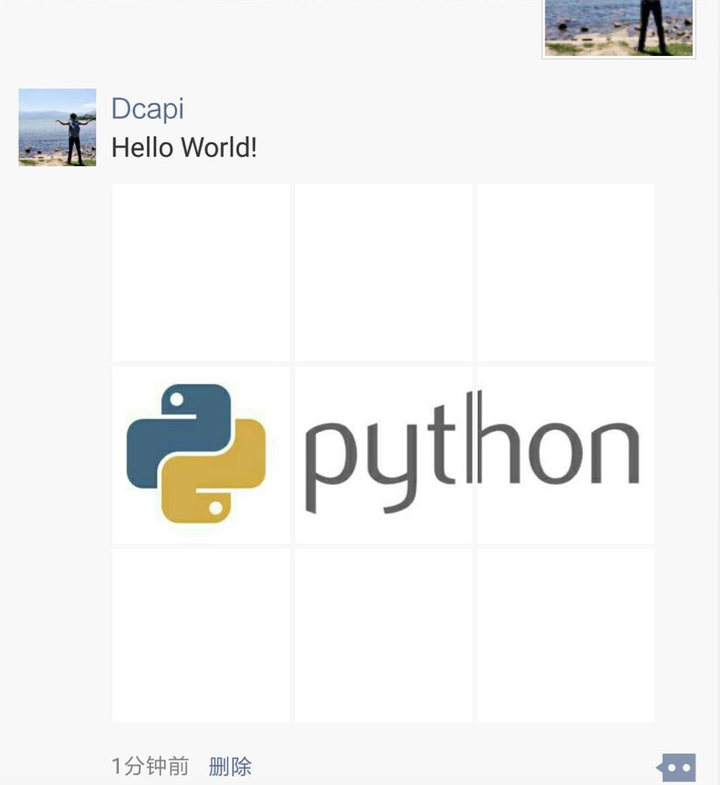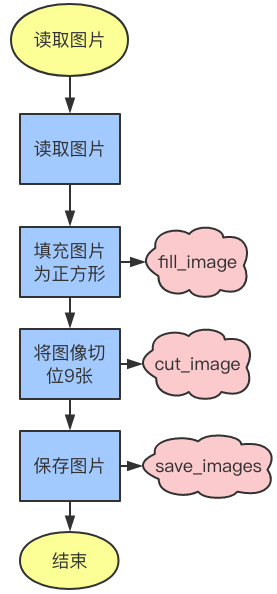
智一面的面试题提供python的测试题
使用地址:http://www.gtalent.cn/exam/interview?token=52cf92de494f4a8b6165d817a7279966
PIL(Python Image Library)
下面我们用一个实际的例子
看看50行python代码可以做什么神奇的事情
这是发的一个朋友圈
切图前是一张图
切图后就是九张图啦
成功霸屏

除了可以处理规整的正方形图片
还可以处理非规则的图片
比如下面这张宽度远大于高度的图片
二胖是怎么处理的呢?

很简单
取宽和高之间的较大值
然后填充白色
就可以构造出一张正方形的图片啦

当然,想把一张图片做成这样子也很容易啦,现在很多手机上的图片处理软件都能实现。
举这个例子只是为了给大家介绍介绍PIL库,感兴趣的童鞋也可以练习练习编程嘛~
好了,现在就来看看这个PIL库到底是个什么吧~
PIL是一个功能非常强大的Python图像处理标准库,但是呢,由于PIL支持Python2.7,所以使用Python3的程序猿们又在PIL的基础上分离出来了一个分支,创建了另外一个库Pillow,是可以支持Python3的。
Pillow兼容了PIL的大部分语法,使用起来也非常的简单。
下面二胖就讲讲是如何使用PIL库实现了上文介绍的小程序。
其实思路很简单:

对应代码如下:
# -*- coding: utf-8 -*-
'''
将一张图片填充为正方形后切为9张图
Author:微信公众号:大数据前沿
'''
from PIL import Image
import sys
#将图片填充为正方形
def fill_image(image):
width, height = image.size
#选取长和宽中较大值作为新图片的
new_image_length = width if width > height else height
#生成新图片[白底]
new_image = Image.new(image.mode, (new_image_length, new_image_length), color='white')
#将之前的图粘贴在新图上,居中 if width > height:#原图宽大于高,则填充图片的竖直维度
#(x,y)二元组表示粘贴上图相对下图的起始位置
new_image.paste(image, (0, int((new_image_length - height) / 2)))
else:
new_image.paste(image, (int((new_image_length - width) / 2),0))
return new_image
#切图
def cut_image(image):
width, height = image.size
item_width = int(width / 3)
box_list = []
# (left, upper, right, lower) for i in range(0,3):#两重循环,生成9张图片基于原图的位置 for j in range(0,3):
#print((i*item_width,j*item_width,(i+1)*item_width,(j+1)*item_width))
box = (j*item_width,i*item_width,(j+1)*item_width,(i+1)*item_width)
box_list.append(box)
image_list = [image.crop(box) for box in box_list]
return image_list
#保存
def save_images(image_list):
index = 1
for image in image_list:
image.save('./result/python'+str(index) + '.png', 'PNG')
index += 1
if __name__ == '__main__':
file_path = "python.jpeg"
image = Image.open(file_path)
#image.show()
image = fill_image(image)
image_list = cut_image(image)
save_images(image_list)
相信大家看了代码就知道是怎么实现的了吧

